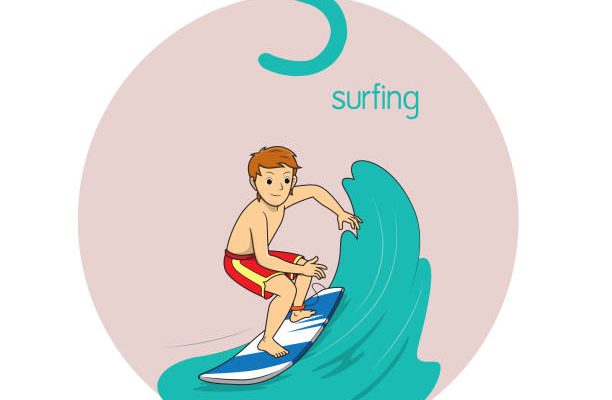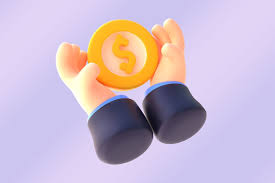The condition and knowledge of the playing field of every outdoor sport are more or less predictable. But there’s one such sport, filled with drive and adrenaline, that is ever-changing and unpredictable. So, once a person gets hooked on it, this sport becomes a passion, lifestyle, and a source of happiness. Yes, we’re talking about surfing.
So, if you’re wondering ‘what is surfing!’, read on to know everything from its history to how you can choose the right surfboard if you ever decide to surf!
What is Surfing?
Surfing is one of the water sports where a surfer rides the waves on specially designed equipment called ‘surfboard.’ Surfing is usually done in an ocean or sea, but with innovation and technological advancement, surfing can now be done in rivers and artificial wave simulators.
Surfboards are 5-11 feet boards that offer speed, stability, and balance to the surfer while riding the waves. They are designed based on the surfer’s experience (beginner, intermediate, advanced) and preference (speed and style). Choosing the right surfboard is an essential phase for every surfer, as it can make the surfing experience better or worse.
Surfing is a culture and a lifestyle. It is a functional, recreational and competitive sport. Knowing how to surf is a long process; it can take a few weeks to possibly a few years to surf well. However, there are a lot of maneuvers and surf styles that are learned and executed with persistence and practice.
Who Invented Surfing?
Surfing was invented and enjoyed by the royalties and the commoners of Hawaii and Polynesia nearly 200 years ago. Captain Cook and his crew documented that the Polynesians rode the waves when he touched the Pacific Isles.
As to how surfing was invented, it was mainly for fishing, mostly on rafts. Hence, survival acts like fishing and possibly migrating to other islands might have started the preference for surfing.
As years passed, the knowledge and techniques to ride the waves more skillfully and efficiently would have been developed and passed on to the next generations. However, if you want to focus on a specific and oldest record linked to who invented surfing, it would be Homo Erectus, nearly 1.8 million years ago.
Though surfing lost momentum in the 19th century, with Hawaii becoming a tourist hotspot, it became popular again in the 20th century. Gradually, California and Australia became famous for surfing, thanks to Jack London, an American writer, and George Freeth and Duke Kahanamoku, Hawaiian surfers.
Types of Surfing
Surfing has many types and variations, and a unique experience comes with each. And to make that a complete experience, you need to have some ideas on types of surfboards, waves and surfs.
Wave boarding can be categorized into 3 types, as stated below.
- Shortboard Surfing
Intermediate and professional surfers do it. Usually, a small surfboard under 7 feet is used. It has low balance and stability but offers excellent speed and maneuverability.
- Longboarding
Mostly, beginners perform this type of surfing. Surfboards for this purpose can be 7-10 feet long. They have a high balance, stability, and buoyancy but offer low maneuverability.
- Traditional Style Surfing
It is considered ‘pre-1969’, with all surfboard types and techniques. The surfer, unlike modern times, prioritizes grace and continual wave riding. They have surfboards like old mals and loggers.
Types of Surfboards
To know surfboarding better, you must have a comprehensive idea about surfboards. These have a lot of variety based on the skill level and preference of the surfers. The 5 types are given below.
- Shortboards
Advanced and intermediate surfers use these. They’re usually 5-7 feet high. They have low volume and great speed. This board facilitates a lot of stunts with great control and maneuverability.
One disadvantage of shortboards is that they are much harder to paddle and balance and take a long time to learn. As a result, they’re most suitable for high, powerful, and fast waves.
- Longboards
These surfboards are used by beginners and sometimes by intermediate and advanced surfers. They’re usually more than 9 feet tall and have high volume but less speed. Also, longboards are easier than shortboards to paddle and balance.
The longboard’s higher volume and surface area ensure longer wave time and easier catching of waves. As a result, even small and weak waves can be enjoyed with longboards.
- Fish Boards
Advanced and intermediate surfers use fish boards. They’re 5-6.5 feet tall and have fishlike tails.
They have more volume than shortboards and are best for small and large waves. Comparatively, it’s easier to paddle and balance than shortboards.
- Funboards
These surfboards are 7-9 feet tall and have the features of both longboard and shortboard. They are great for intermediates progressing from longboard to shortboard as many stunts can be learned in this.
Funboards have good stability and balance so that the surfer doesn’t have to face wipeouts constantly.
- Guns
It is definitely for advanced and competitive surfers who can eat aggressive waves for breakfast. They are heavy and can be anywhere from 7-12 feet tall.
Surfers can get a lot of maneuverability because the nose and tail are pointed, quickly cutting through the water. However, the surfers must also be in utmost control because riding big and fast waves requires balance and stability.
Types of Surf
There are different kinds of waves in various types of surfs. There are three types of surfs elaborated below.
- Beach Breaks
These are the spots where the waves break over the beach. It is a common lineup place for surfers. The waves are consistent but change due to the constant shift in the sand.
Hence, the wave types can’t be predicted. This break is most suitable for beginners because of the safety offered by the soft sand. Portugal, France, and Mexico are famous for beach breaks.
- Point Breaks
At these spots, the waves curve along the rocky shoreline or headline and peel, producing long and fast waves. These waves are unidirectional.
Surfers claim paddling to point breaks is easy because it’s easier to go around the wave and not disturb the surfer with priority. California, South Africa, and Australia are famous for point breaks.
- Reef Breaks
These spots are where the waves break over rocks and reef beds. Hence, they’re not safe because the waves are shallow, and the surfer is prone to accidents if they lose control.
Reef breaks create constant barreling and plunging types of waves with similar wave patterns, unlike beach breaks. Indonesia, Hawaii, Fiji, and Tahiti house some of the best spots for reef breaks.
History of Surfing
As mentioned before, surfing was invented in Polynesia and Hawaii, and it was a versatile sport where everyone took part. Hence, the history of surfing shows that people surfed for fishing and pleasure.
In the 20th century, Hawaii regained its surfing culture after a period of lull in the 19th century. ‘Duke Kahanamoku’ was one of the most famous surfers in 1890. He was the one who introduced surfing to many places across the world. As more people started surfing, surf shops came into existence to cater to them.
Windsurfing is another variant of wave surfing discovered in 1968 by Henry Doyle Schweitzer and Jim Drake in California. It combines surfing and sailing, where the surfer is propelled forward by a mast attached to the surfboard.
Surfing started to become more popular than fishing and recreation. It became a culture and lifestyle. It became a sport where there was fun and also competition.
Later, the World Surf League was started by Fred Hemmings and Randy Rarick in 1976 to take this sport to a higher level. Thus, it helped in providing surfing a competitive edge.
How to Choose an Adequate Surf Spot?
Choosing the right surfing spot depends on unpredictable wave conditions. Therefore, the surf spots are suitable for different surfers on different occasions.
Surf spots like beach breaks are the right surf spots for beginners, but not always. Even on beach breaks, the waves can be fast and sometimes slow, and the soft sand bed is not always safe. Thus, it’s always better to consult a professional surfer and online forums for wave conditions and the best surfing spots near me.
Some of the best surf spots in the world lie in Hawaii, South Africa, California, Polynesia, and Mexico.
Know About the Health Benefits of Surfing
Physical fitness is one of the most important health benefits gained by surfing. In addition, as surfing is a very active and influential sport, it contributes to cardiovascular health.
Besides, paddling needs a lot of movement in the upper body, and they help strengthen the hands and shoulders.
Surfers gain extraordinary core strength as they need to balance and stay on the surfboard. The legs also get strengthened because of the balancing act.
Moreover, many surfers claim that surfing is the best stress buster. Hence, it’s undeniable that there are ample benefits of surfing.
How to Choose a Surfboard?
When a surfer chooses the right surfboard, there’s much to consider because it can make or destroy a surfing experience.
Here are a few things to consider while opting for a surfboard.
Skill Level
Each surfer will have their own preference based on past experience or some guidance. A surfer might be intermediate, beginner, or professional. Hence, it’s crucial to know and think about what type of waves one wants to ride or what new stunt one wants to learn.
There is no perfect board as the surfer can keep changing or adding new surfboards according to experience and wave types.
Wave Types
The surf conditions matter a lot in choosing a surfboard.
If a surfer desires to ride slow waves, they must choose longboards with high volume. On the contrary, a surfer who wants to ride fast and aggressive waves must buy shortboards or guns.
Fitness
With surfing being a sport where one needs to have a lot of stamina, a surfer gradually increases their fitness level.
Fitness makes a massive difference in how a surfer enjoys surfing. So, to have a long wave time, be stable, control the board, and in case to save oneself, it’s essential to be fit.
Surfboard Volume
The right surfboard volume determines the stability, volume, and buoyancy.
Thus, a beginner learning to stand on the surfboard or starting to paddle should have a surfboard volume of around 2-3 liters.
On the contrary, an intermediate doing turns or trimming down the line must have around 3-4 liters volume. And a professional competitor has a surfboard volume of more than 5 liters.
Surfboard Length
Surfboard length depends on the surfer’s height, weight, and preference. When choosing a surfboard for beginners, the surfboard would generally be higher than them.
As the surface area is more, it offers more buoyancy and balance and less speed. But for intermediates and professionals, shortboards are better for enhanced speed and rigid turning.
How to Choose Surfboards for Beginners?
The best surfboard for beginners is the one with a high volume, which is at least 2 feet higher than them. On the other hand, longboard and minimal are ideal for beginners since they need a lot of balance and stability, the broader and bigger the board and rounder the nose, the better the experience.
Beginners always have wipeouts while learning. Hence, the one with good buoyancy is important. For beginners, speed and techniques are not the priority; paddling, not getting wiped out, and catching many waves are. Therefore, longboard fins, thrusters, and 2+1 fins are recommended for beginners.
FAQs
- What is surfing in sports?
Surfing is an enjoyable water sport involving riding the waves’ crest on a surfboard, in an ocean, or a sea. It can be done in rivers and artificial wave simulations.
- Why is it called surfing?
The word ‘surfing’ is believed to have originated from ‘suff,’ which means ‘the shoreward surge of the sea.’ The term ‘surge’ goes way back to the 15th century, which referred to the swelling and surging of the waves.
- Who was the first person to start surfing?
Homo Erectus is considered to be the first person to start surfing nearly 1.8 million years ago.
- Where did surfing first originate from?
12th-century cave paintings show that Hawaiians and Polynesians invented surfing.
- How many types of surfs are there?
There are 3 types of surf: beach breaks, reef breaks, and point breaks.
- When did surfing first begin?
Surfing dates back to 400 AD in Polynesia as they migrated to Hawaii from Tahiti and Marquesas Islands.
- How do you pick a good surf spot?
While picking the right surfing spot, check for the swell or wave size at the place and choose the one best suited to your skill level.
- Why is surfing important to people?
Apart from surfing being a recreation, it’s a lifestyle and culture. Surfing offers many health benefits and coordination, which gives people the courage to enjoy the roaring waves and respect the ocean.
- What size surfboard should I get for my height and weight?
If you’re a beginner, buy a surfboard that’s 2-3 feet higher than your height with a lot of volumes. Always consult the instructors or professionals to understand better what you’re doing.
If you’re an intermediate or professional surfer, your preference and experience play a huge part in selecting the right surfboard.
- What surfboard should a beginner get?
A beginner should get a surfboard with high volume and surface area. It offers stability, balance, and buoyancy. Thus, longboards and mini mals are two preferred surfboards for beginners.




